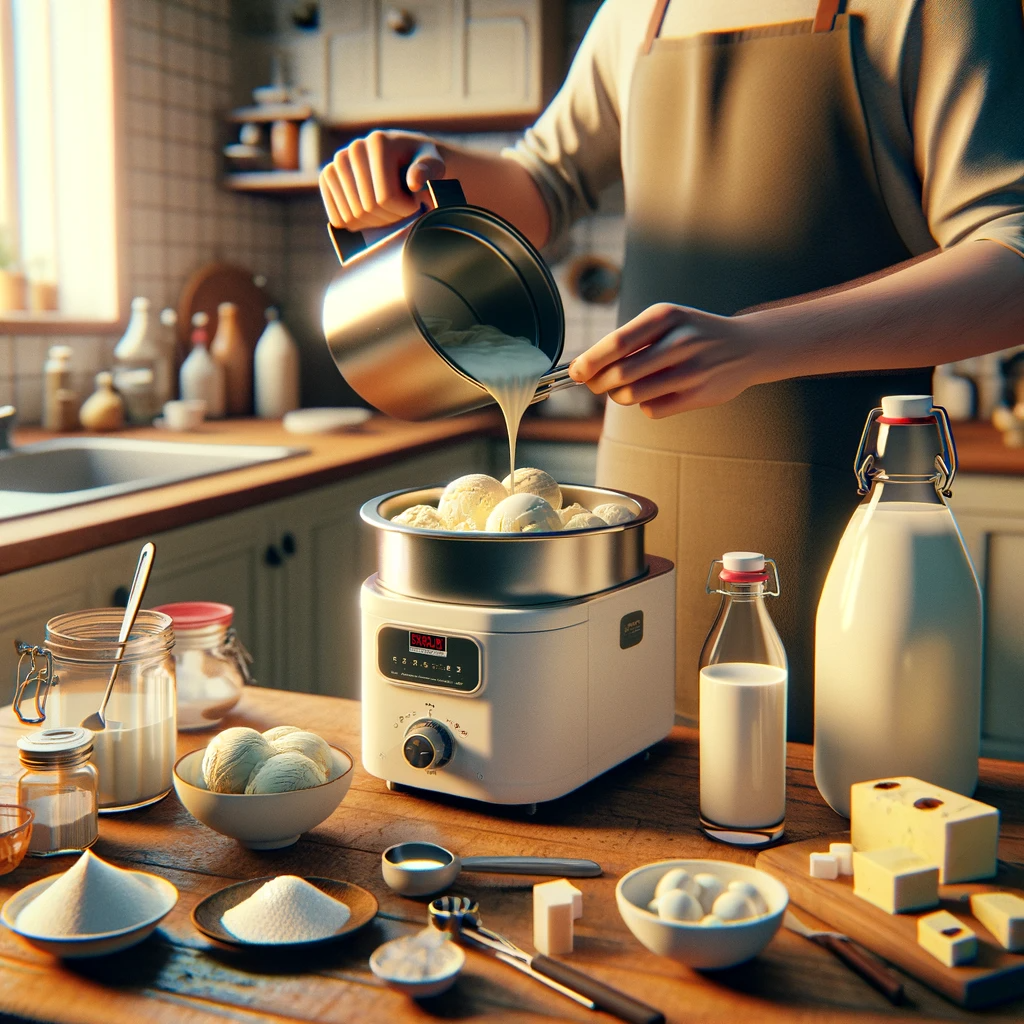
How Ice Cream is Made
Share
he Making of Ice Cream: A Journey from Ingredients to Indulgence
Ice cream, a universally beloved dessert, has a rich history and an intricate manufacturing process that transforms basic ingredients into a creamy, delightful treat.
1. Historical Background and Evolution
The origins of ice cream can be traced back to ancient times, with early versions involving snow mixed with fruit and honey. Over centuries, this evolved into the more sophisticated and creamy dessert we know today, largely thanks to advancements in refrigeration technology and culinary techniques.
2. Ingredient Selection: The Foundation of Flavor
The primary ingredients of traditional ice cream are milk, cream, sugar, and flavorings. The choice of these ingredients is crucial as they determine the quality and taste of the final product. Milk and cream form the base, providing fat, which is key to the creamy texture. Sugar acts as a sweetener and also lowers the freezing point, aiding in texture. Flavorings range from vanilla and chocolate to a myriad of fruits and innovative combinations.
3. The Science of Emulsification and Stabilization
Emulsifiers and stabilizers are often added to maintain a consistent texture and extend shelf life. Emulsifiers like lecithin keep the mix homogenous, preventing the separation of fat and water. Stabilizers, such as guar gum, help control ice crystallization, ensuring a smooth texture.
4. Pasteurization: Ensuring Safety and Consistency
The mixture is pasteurized to kill any harmful bacteria and stabilize the mix. This involves heating the mixture to a specific temperature for a set period. Pasteurization also improves the flavor and body of the ice cream.
5. Homogenization: Creating a Uniform Texture
After pasteurization, the mix is homogenized to break down fat molecules, ensuring they are evenly distributed. This process prevents fat globules from clustering, leading to a smoother texture.
6. Aging: Enhancing Flavor and Texture
The mix is then aged, usually at cold temperatures, for several hours or overnight. Aging allows the fats to crystallize and the proteins to hydrate, improving the texture and body of the ice cream.
7. Flavoring: The Art of Taste
The flavoring process varies greatly depending on the type of ice cream. Vanilla, fruits, chocolate, and other flavors are added. The quality of these ingredients plays a significant role in the final taste.
8. Freezing: The Transformation
The aged and flavored mix is then churned and frozen. This is a critical step where air is incorporated, increasing the volume and creating a soft texture. The churning also helps to prevent the formation of large ice crystals, ensuring the ice cream is creamy and smooth.
9. Hardening: Achieving the Perfect Scoop
Post-churning, the ice cream is still somewhat soft. It's then moved to a blast freezer where it hardens. This rapid freezing locks in texture and flavor and prepares the ice cream for storage and transportation.
10. Packaging: Protecting and Presenting
Proper packaging is essential to maintain the quality of the ice cream during storage and transport. Packaging varies from simple containers for bulk ice cream to individualized packaging for specialty products.
11. Storage and Distribution: The Cold Chain
Maintaining a consistent cold chain is critical for ice cream. It must be stored and transported at temperatures that prevent melting and refreezing, which can degrade the quality.
12. Innovations in Ice Cream Making
The ice cream industry continuously innovates with new flavors, ingredients, and production methods. From dairy-free options to exotic flavors and incorporation of superfoods, the industry adapts to changing consumer preferences and dietary needs.
13. The Home-Made Alternative
For those making ice cream at home, the process, while less complex, follows similar principles. Using an ice cream maker or manual methods, home chefs can create a variety of flavors with personalized touches.
14. A Sweet Symphony of Science and Sensation
The process of making ice cream is a fascinating blend of science, culinary art, and technology. Each step, from ingredient selection to freezing, plays a critical role in creating the final product that delights millions worldwide. The evolution of ice cream making reflects not only advances in food technology but also changes in consumer tastes and preferences. Whether enjoyed as a simple scoop in a cone or as an elaborate dessert, ice cream remains a testament to human ingenuity and the pursuit of culinary pleasure.
